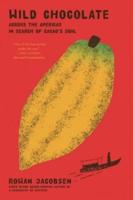Publisher's Synopsis
Excerpt from Foreign Agriculture, Vol. 7: A Review of Foreign Farm Policy, Production, and Trade; July, 1943
Sheep are also widely distributed over the nation but are more highly concentrated than cattle as far as major production areas are concerned. Che large sheep zone is in eastern Entre Rios and southeastern Corrientes; another in southern Buenos Aires; and the largest one occupies practically all of Patagonia, which is approximately all the continental territory of Argentina south of latitude 39 S. Because sheep produc tion is mixed with cattle and even with cereal production in other areas and because' it is almost the sole enterprise in the greater part of Patagonia, this latter area is described here. Patagonia has an area of square miles with a human p0pula tion of approximately and a sheep population of In it are the largest landholdings and the largest-scale farm operations of the nation. In the most typical sections more than 99 percent of all farms are larger than acres, and a number of them are more than acres in size. The working population is less than person per square mile, more than 70 percent of all farm headquarters are more than 15 miles from railroad stations or ports, and approximately 50 percent of the farm homes are more than 15 miles from a public school.
The typical method of operating a large sheep estancia is by administration. In some cases the land is divided among tenants and sharecroppers, so to Speak. They receive their sheep from the manager, agree to handle them in specified ways, and finally turn them over to the manager for marketing. The renter receives 25 percent of the net sales for the sheep and wool he delivers to the manager. 'the average renter is given responsibility for to sheep. In the best grazing area his herders handle head, in the poorer grazing areas not more than head. The average wage of the herder is from $10 to $15 per month, plus housing and food. The same is true whether he works for a tenant or a farm manager.
About the Publisher
Forgotten Books publishes hundreds of thousands of rare and classic books. Find more at www.forgottenbooks.com
This book is a reproduction of an important historical work. Forgotten Books uses state-of-the-art technology to digitally reconstruct the work, preserving the original format whilst repairing imperfections present in the aged copy. In rare cases, an imperfection in the original, such as a blemish or missing page, may be replicated in our edition. We do, however, repair the vast majority of imperfections successfully; any imperfections that remain are intentionally left to preserve the state of such historical works.










